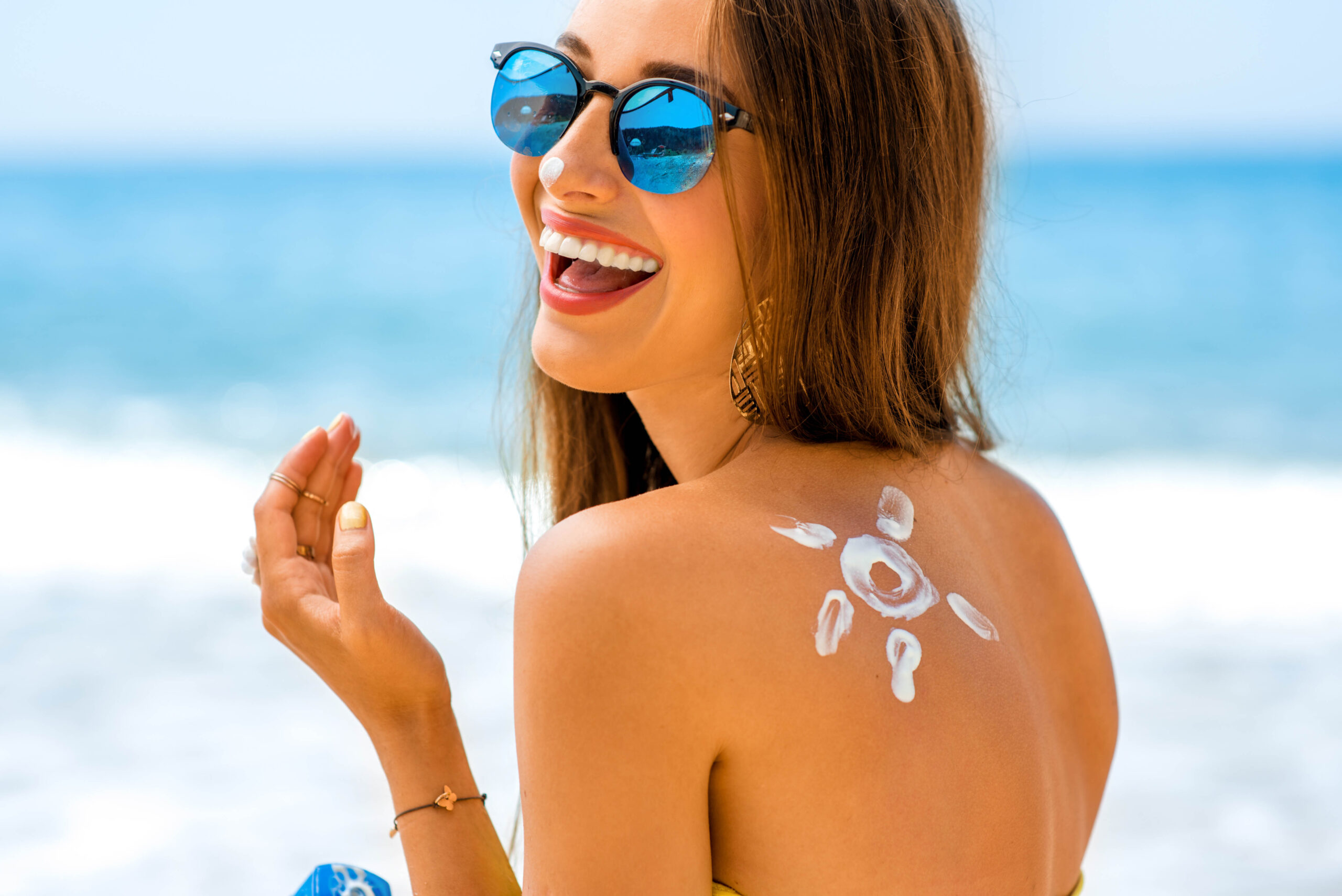Studies Show Sunscreen Choice Saves Coral Reefs

Coral reefs contain the most diverse ecosystems on the planet. They house more species per unit area than any other
marine environment but they are being damaged by changes in the oceans. Coral reefs are very sensitive to changes in both water temperature and ocean acidity levels. Ocean temperatures have been steadily increasing during the late summer and fall months over the past few years. Ocean acidity levels have also been increasing because of substances like sunscreen that people use before entering the water.When the ocean’s average temperature and acidity thresholds are broken, coral reefs cannot sustain a healthy life. These stressors cause the coral to go through a process called coral bleaching. Coral bleaching is when the algae that live inside the coral polyps are ejected and leave the coral polyps without nutrition or color. Coral polyps can harvest some of their own food but it is unlikely that polyps will survive for very long without their symbiotic algae. This is because the coral polyps can only produce about 10 to 20 percent of their diet on their own.
Coral reef loss is occurring around the world in places like Hawaii, the Caribbean, Great Barrier Reef, and Israel. As individuals, we may not have the ability to directly control the ocean’s temperature. But, we can control what type of sunscreen we use before getting into the water.  Recent studies show that a chemical found in many popular sunscreens is having a negative effect on the reproduction, growth, and survival of coral around the world. This chemical is called oxybenzone. Marine destinations, such as coral reefs, that are popular among tourists have the highest concentrations of this dangerous chemical according to a study published in the Archives of Environmental Contamination and Toxicology.
Recent studies show that a chemical found in many popular sunscreens is having a negative effect on the reproduction, growth, and survival of coral around the world. This chemical is called oxybenzone. Marine destinations, such as coral reefs, that are popular among tourists have the highest concentrations of this dangerous chemical according to a study published in the Archives of Environmental Contamination and Toxicology.
Each of us can help reduce the amount of oxybenzone that enters the delicate coral reef ecosystems. This effort is as easy as picking a different way to protect your skin from the sun’s harmful UV rays. By reducing the coral stressors that we can directly control, we will help the reefs around the world have a more sustainable future.
One way to protect the reefs is by wearing rash guards, hats, and wetsuits to prevent sunburn rather than wearing sunscreen. But, many people want to get a nice tan while on vacation. So this option doesn’t always sound appealing since it prevents the sun's rays from hitting the skin at all. Another way to protect the reefs is to use reef-safe sunscreen. Many of the boating companies around Maui supply their vessels with reef-safe sunscreen. Crew members are also educating their passengers on the harmful effects of the oxybenzone chemical that is present in most sunscreens.  A reef-safe product is anything that is mineral based. These sunscreen products usually contain ingredients like zinc oxide and titanium dioxide. Always read the ingredients list before you purchase sunscreen. Some sunscreens are advertised as reef-safe, but still contain harmful chemicals. It is best to follow the “if you can’t say it, don’t spray it” rule.
A reef-safe product is anything that is mineral based. These sunscreen products usually contain ingredients like zinc oxide and titanium dioxide. Always read the ingredients list before you purchase sunscreen. Some sunscreens are advertised as reef-safe, but still contain harmful chemicals. It is best to follow the “if you can’t say it, don’t spray it” rule.
We take pride in being an advocate for the environment through conservation, especially for the Hawaiian Island forests. It is important to remember that everything that affects the ocean affects the land as well. If we work together to take care of our ‘aina (land), it will take care of you.
Reef-safe, mineral-based sunscreens:
- Alba Botanica
- Bare Republic
- Hawaiian Sol
- Raw Elements
- Surf Screen Organics
- Badger
About the Author: Experience the natural wonder of the Hawaiian Islands, via a zipline tour with Skyline Eco-Adventures. Enjoy the Maui and Kauai landscapes through an unforgettable tour. Book your adventure at www.skylinehawaii.com, today! 